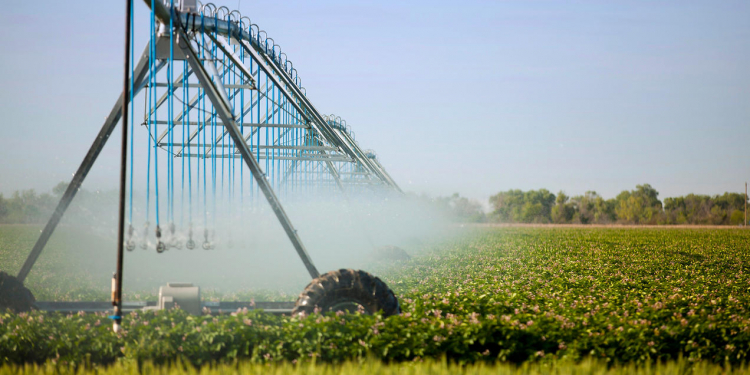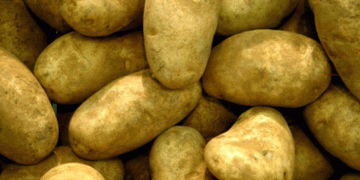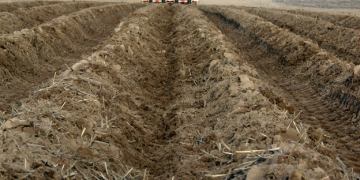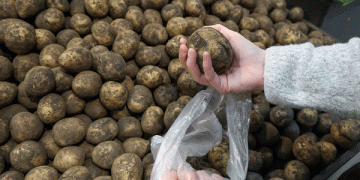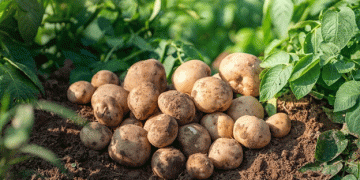Nicolás Serna is 74 years old and has been growing potatoes all his life.
With the appropriate machinery and new applications, this tuber can be cultivated, saving seeds and phytosanitary products while increasing yields.
The potato comes from the Andes mountain range and did not enter Europe until almost a century after the discovery of America. Over the decades it would spread to other corners of the world but it was not until the 18th century that its cultivation began on a larger scale. From that time to the present day, the way of farming, logically, has evolved. In recent years, advances in technology and machinery have made it possible to improve techniques, increase yields and reduce labor.

Nicolás Serna knows that well. He is 74 years old and has been growing potatoes all his life. Today, helped by his children Sara, Isidro and Nicolás, he is one of the largest potato growers in Spain and supplies the Pepsico company, in addition to selling product for planting and consumption. Since when he was 12 or 13 years old, he saw his father install the first sprinkler irrigation system in the province of Burgos until today things have changed a lot and he has seen them change.
The first thing he does is regret the little affection we have for what we do. He complains that in the main supermarket chains it is difficult to find national potatoes and that the origin of the product is not well differentiated on the shelves. Nicolás has traveled a lot for his work and knows how things are in other places: “In France you don’t see potato from outside. And in England imported potatoes are placed in well differentiated displays, so that the consumer knows what he is buying.
Nicolás claims that the Spanish potato is as good or better than that which may come from outside and emphasizes that much less nitrates are used here. European potatoes are full of nitrates. There they can use up to a thousand kilos per hectare, while here it is usually not more than 300; less even with some more forage varieties that I am testing.
He also criticizes that the potatoes are sold washed. “When you put them in water, they open the pores and absorb moisture, they are no longer the same. And possible rottenness or diseases can spread ». Nicolás only washes the potatoes that go to customers who ask for it, such as Pepsico, but he does not wash the consumer potatoes to preserve their quality.
It has a pioneering storage system that maintains a constant temperature in the silos where the harvest is stored. Sensors detect possible temperature variations, which are automatically corrected through tunnels that let in air from outside if necessary. He says that “it is not convenient for them to be very cold because sugars are generated in the cold and then turn black when frying.”
To sow, he uses a system that he introduced himself in Spain about two decades ago. Nicolás had the idea in his head since 2000 and traveled around Europe to see how things were done in other countries. Remember how in France farmers hid new machinery so as not to reveal innovations to what could be their competition; France sells a lot of potatoes to Spain and French farmers do not benefit from the fact that Spaniards learn new techniques that can increase yields and reduce production costs.
However, he ended up finding what he wanted and from 2003 he began to implement a way of planting potatoes that changed things. This new method of preparing the soil leaves the substrate much looser and allows to obtain equal or higher yields using less amount of seed. As the soil is more spongy, the root system of the plant extends more and the tubers develop better, so it is advisable to leave more space between each planted potato. In addition, the ridges become 90 centimeters apart from each other, instead of the usual 75.
Thus, by giving a few more centimeters to the space between each potato that is buried and further separating the furrows, between 200 and 300 kilos of seed per hectare are saved. Taking into account that Nicolás breaks some 300 hectares of potatoes a year, this represents a not inconsiderable saving. And more taking into account that as the land is in better condition, this does not imply a decrease in production, but rather the opposite, because each foot produces more and larger potatoes.
But nothing is free and to achieve these results you have to invest a lot of work and a good amount of money in machinery. The process is simple, although expensive. First the winter plow is passed in depth. Later, with the sowing season approaching, a cultivator passes by who lightens the soil a bit and spreads the compost. Then a special implement is used that leaves four deep grooves with ridges between them of the exact width so that the next machine, the most important, can do its job.
This machine in question is responsible for lifting the earth from these ridges and sifting it with a system of rollers that only lets the loose substrate fall again and separates the stones, clods and even the buried ropes from the straw bales of previous years. and other foreign objects that may be under the surface. According to Nico, Nicolás’s son, the clods prevent the proper development of the tubers and there is no point in fighting to undo them if they can be separated.
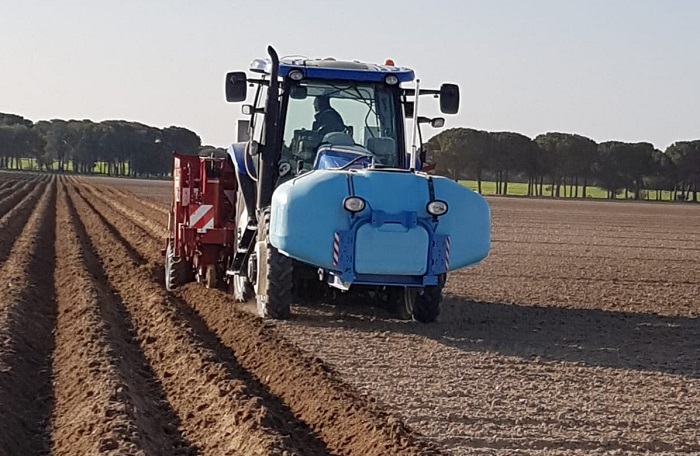
With all the stones and clods that move away, two things can be done. The first option is to dump it on a trailer to permanently remove it from the plot. But there is also the alternative of leaving it at the bottom of the furrows, in what will be the ruts of the seeder and the combine harvester, which is an advantage: if the rains intensify and the ground becomes too soft, that conglomeration of boulders will do the trick. pavement paper and will allow machines to work without sinking in conditions that would otherwise be impossible.
Once this machine has passed, it is the seeder’s turn. According to Nicolás, the one they use is unique in Spain. He controls the size of each potato he buries and depending on whether it is bigger or smaller he leaves more or less space until the next seed. Larger potatoes have more eyes, which is where the sprouts come from, so larger ones tend to make larger plants that need more space to grow, both above and below the surface. This optimizes the use of the land, obtaining the maximum possible yield without wasting seed. In addition, the machine makes small holes between furrow and furrow every little space so that the irrigation water is not wasted and is better used.
For irrigation Nicolás uses rotating pivots. Connected to a water intake at one end, they rotate in a circular motion. Some of those they have covers more than one hundred hectares in one round. To know when and how much to water Nicolás uses his experience. “You have to step on the field, that’s how it looks.” The irrigation system is run by his son Nico, who makes good use of new technologies. Through a mobile phone application you can make it work whenever and wherever you want, giving it the right speed to soak the earth as necessary. In fact, it has come to connect irrigation from the west coast of the United States without any problem.
Nico says that these types of technologies are the future, although he smiles looking at his father when he says that older people in general have a harder time coming up with these new inventions. He talks about drones that detect fungus spores early to make treatment more effective if necessary or save on fungicide if it is not necessary to use it; or from applications that avoid sowing cereal (they also grow wheat and barley) where then the crushed ruts of the tractor will remain when applying the phytosanitary against the fungus. These are developments that are already here and that will spread rapidly in the coming years.
And after sown and well watered, it is time for the harvester. Nicolás uses a 32-ton machine for this task that has a hopper that can hold 16,000 kilos. In addition, when removing the potatoes, it separates them from the earth and the stones that could accompany them by means of a system of rollers. And it is able to work with muddy ground thanks to the system by which the stones are piled up in the tracks when preparing the ground and its two tracks on the front axle. With this machine there is now manpower, since the personnel who traditionally are in charge of collecting the potatoes that the older machines simply leave on the surface are no longer necessary.
Seed potatoes.
Nicolás sells potato for consumption and for industry, but also seed potatoes. This potato is cultivated in a different way, since they are buried closer together, which prevents them from developing as much as they could and makes them smaller. That seed is sold throughout Spain and then bought back from farmers to market it. In this way, it takes advantage of the different rates at which potatoes are grown in the peninsula so as not to run out of the market at any time. Their potatoes, depending on the time of year, may have been grown in Seville, Salamanca, Murcia or Burgos, to give a few examples.
